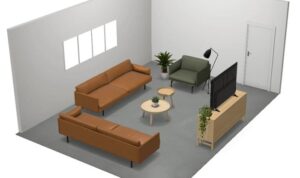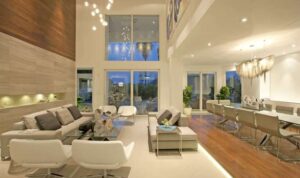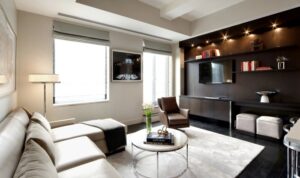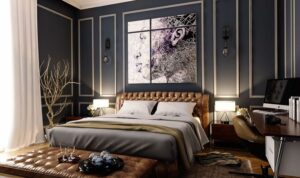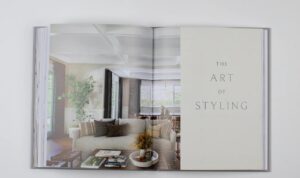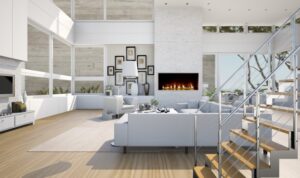As we delve into the world of room interior design, we uncover the intricate elements that contribute to a well-designed space. From the play of lighting to the impact of color schemes, every detail plays a crucial role in shaping the ambiance of a room.
Let's embark on a journey to discover the art of creating inviting and visually appealing interiors.
In this guide, we will explore various styles, furniture selection tips, decor ideas, and more to help you transform your room into a personalized sanctuary that reflects your unique style and personality.
Elements of Room Interior Design
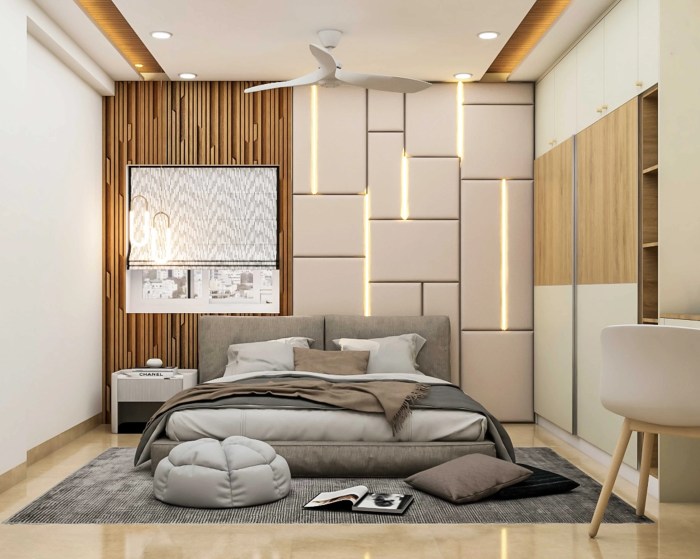
When it comes to creating a well-designed room interior, several key elements play a crucial role in achieving a harmonious and visually appealing space.
Role of Lighting
Lighting is a fundamental element in interior design as it can greatly influence the ambiance and mood of a room. Proper lighting can highlight architectural features, create focal points, and enhance the overall design aesthetic.
Importance of Color Schemes
Color schemes are essential in room design as they set the tone and atmosphere of the space. Different colors evoke different emotions and can impact the perceived size and functionality of a room. By carefully selecting color palettes, designers can create cohesive and inviting interiors.
Furniture Arrangement Impact
The way furniture is arranged in a room can significantly impact the overall design and functionality. Proper furniture placement can optimize traffic flow, define different zones within a space, and create a balanced composition. For example, arranging furniture around a focal point such as a fireplace or a large window can enhance the visual appeal of the room.
Styles and Themes in Room Interior Design
When it comes to room interior design, there are various styles and themes that can be incorporated to create a unique and aesthetically pleasing space. Each style brings its own characteristics and influences, allowing individuals to showcase their personality and taste through their interior design choices.
Modern, Minimalistic, Traditional, and Eclectic Styles
Interior design styles such as modern, minimalistic, traditional, and eclectic each have their own distinct features and aesthetics. Here is a brief comparison and contrast of these styles:
- Modern:Characterized by clean lines, simple color palettes, and a focus on functionality.
- Minimalistic:Emphasizes simplicity, with a focus on essential elements and a clutter-free space.
- Traditional:Features classic designs, ornate details, and rich colors, often inspired by historical eras.
- Eclectic:Combines elements from different styles, creating a unique and personalized look by mixing textures, patterns, and colors.
Incorporating Themes like Scandinavian, Industrial, or Bohemian
Themes such as Scandinavian, industrial, or bohemian can add character and charm to a room. Here are some tips on how to incorporate these themes into room design:
- Scandinavian:Opt for light colors, natural materials, and minimalist furniture to achieve a clean and cozy look.
- Industrial:Use raw materials like metal and exposed brick, paired with vintage furniture to create an urban and edgy feel.
- Bohemian:Embrace vibrant colors, eclectic patterns, and mix-and-match furniture to achieve a free-spirited and boho-chic vibe.
Achieving a Cohesive Look when Blending Styles or Themes
When blending different styles or themes in a room, it's essential to create a cohesive look to ensure that the space feels harmonious and well-balanced. Here are some tips to help you achieve this:
- Identify a unifying element, such as a color scheme or texture, to tie together different styles or themes.
- Balance contrasting elements by incorporating them in moderation and ensuring they complement each other.
- Consider the scale and proportion of furniture and decor pieces to create visual harmony in the room.
- Pay attention to the flow of the space and how different elements interact with each other to maintain a cohesive design throughout.
Furniture Selection and Placement
When it comes to room interior design, furniture selection and placement play a crucial role in creating a harmonious and functional space. Choosing the right furniture pieces based on the room size, layout, and function can significantly impact the overall look and feel of the room.
Additionally, how you arrange the furniture can optimize space utilization and create a seamless flow within the room. Balancing aesthetics and functionality is key when selecting furniture to ensure both visual appeal and practicality.
Choosing the Right Furniture Pieces
When selecting furniture pieces for a room, consider the size and layout of the space. Choose pieces that complement the scale of the room - oversized furniture in a small room can make it feel cramped, while small furniture in a large room may look out of place.
Additionally, think about the function of the room and select furniture that serves that purpose. For example, in a living room, prioritize comfortable seating options, while in a bedroom, focus on a cozy bed and storage solutions.
Arranging Furniture for Optimal Space and Flow
When arranging furniture, start by creating a focal point in the room, such as a fireplace, TV, or a stunning piece of artwork. Arrange furniture around this focal point to create a balanced layout. Ensure there is enough space between furniture pieces to allow for easy movement around the room.
Consider traffic flow and ensure there are clear pathways between furniture pieces to prevent a cluttered look.
Balancing Aesthetics and Functionality
While aesthetics are important in interior design, functionality should not be compromised. Choose furniture that not only looks good but also serves its purpose effectively. For example, opt for a stylish sofa that is also comfortable to sit on. Incorporate storage solutions that are both practical and visually appealing.
By striking a balance between aesthetics and functionality, you can create a space that is both beautiful and livable.
Decor and Accessories in Room Interior Design
Decor and accessories play a crucial role in enhancing the overall design of a room. From rugs and curtains to artwork and plants, each element adds character and personality to the space.
Incorporating Personal Touches and Unique Accessories
Adding personal touches and unique accessories is a great way to make a room feel like home. Consider displaying items that hold sentimental value, such as family photos, travel souvenirs, or handmade decor pieces. Mixing and matching different styles and textures can also create a unique and personalized look.
Significance of Textures, Patterns, and Layers
Textures, patterns, and layers are essential in adding depth and visual interest to a room. Incorporating different textures like smooth fabrics, rough wood, or soft rugs can create a dynamic and inviting space. Patterns, whether bold or subtle, can add a pop of color and create a focal point in the room.
Layering different elements such as throw pillows, blankets, and rugs can add dimension and warmth to the design.
Final Thoughts
In conclusion, room interior design is a harmonious blend of creativity, functionality, and personal expression. By understanding the key elements, exploring different styles, and carefully selecting furniture and decor, you can create a space that not only looks aesthetically pleasing but also feels like home.
Start your design journey today and unlock the potential of your living spaces.
Commonly Asked Questions
What are some key elements of room interior design?
Key elements include lighting, color schemes, furniture arrangement, and decor choices that collectively contribute to a well-designed room interior.
How can different interior design styles be blended effectively?
To blend styles effectively, focus on creating a cohesive look by selecting pieces that complement each other in terms of color, texture, and overall aesthetic.
What role do textures and patterns play in room design?
Textures and patterns add depth and visual interest to a room, creating a dynamic and inviting space. Mixing different textures can elevate the overall design.

